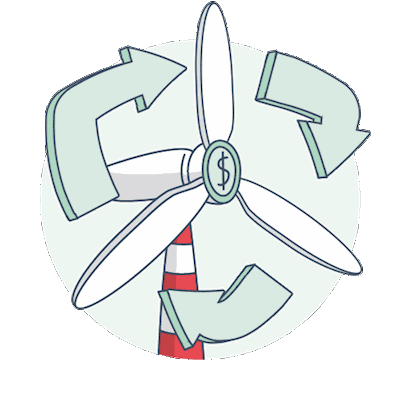You are using an outdated browser. Please upgrade your browser to improve your experience.
Article | 12 September 2023 | ESG

A drop in the ocean – the slow take-up of blue bonds
Against the backdrop of what the United Nations (UN) describe as the ‘triple planetary crisis of climate change, biodiversity loss and pollution’, sustainable finance has grown rapidly in recent years. And environmental, social and governance (ESG) principles are now viewed with greater urgency in business and investment strategies. More and more companies globally have been aligning their business practices with the UN’s Sustainable Development Goals (SDGs), a blueprint for creating a more sustainable future by 2030, which is adopted almost universally worldwide.
Green bonds to blue
In 2021, annual debt issuance linked to ESG themes tripled to $190 billion, spurred by pandemic related financing and ESG linked borrowings. Green bonds are at the core of the ESG financing ecosystem. First launched in 2007, they target environmental and climate friendly projects such as resource conservation and energy projects. A more recent offshoot has been blue bonds, first introduced in 2018. They help to protect the seas by financing marine and ocean projects targeting positive environmental, climate and economic benefits.
Blue bonds work in a similar way to conventional bonds, with investors lending money to an issuer (whether a government or corporation) who agrees to pay interest annually for the term of the bond, in addition to paying back the capital when due. What differentiates a blue bond is that earnings are generated exclusively from investments originating in sustainable blue economy projects. Blue economy sectors include sustainable fishing, ecotourism, waste management and renewable marine energy. While blue bonds embrace economic activities linked to the ocean, they need to be constructed in such a way as to preserve the oceans’ biodiversity and avoid incentivising overdevelopment and the over exploitation of resources, for example in the fisheries sector.
Global gross marine product is equivalent to a Top 10 economy
The economic benefits of blue bonds are potentially significant. The world’s oceans have a ‘gross marine product’ or GMP (equivalent to a country’s gross domestic product or GDP) estimated at $2.5 trillion according to the WWF. This comprises direct outputs such as fishing and aquaculture, services such as tourism and shipping, as well as more specialised benefits such as carbon sequestration in the deep ocean and biotechnology. Despite not including offshore energy (oil, gas or wind) as these are not derived directly from the oceans, the oceans’ GMP positioned them in 2022 as a top 10 global economy. Environmentally, the benefits are equally impressive and vital. Oceans produce half the world’s oxygen, while absorbing 30% of man-made carbon dioxide emissions and more than 90% of the heat from rising atmospheric temperatures. According to the UN, every $1 invested in sustainable ocean solutions is estimated to return at least $5 including social, health, economic and health benefits.
Why the slow take up?
Up to the end of 2022, 26 blue bond transactions had been reported, with a total accumulated value of $5 billion. The first blue bond was a $15 million 10 year bond with a 6.5% coupon issued by the Seychelles, with the funds raised used to significantly expand the islands’ Marine Protection Areas. Others have included a SKr2 billion ($180 million) issue from Nordic Investment Bank and two more from Bank of China totalling $943 million. Yet set against the financing that needs to be invested in marine conservation, blue bond issuance, so far led by either by governments or development banks, has been thin, accounting for less than 0.5% of the sustainable debt market. Part of this slow take up and the consequent funding gap for maritime projects might be explained by the types of issuers. So far, they have tended to be poor nations, reliant on the oceans but vulnerable to weather extremes. Poor credit ratings for these countries can make them less attractive prospects for investing and so issuance by corporates has been relatively scarce. Further obstacles could be attributed to the relative novelty of this type of funding. Compared with the more developed market for green bonds, that for blue bonds suffers from a lack of expertise (either by issuers or investors) or of standardised definitions or metrics.
Many of the challenges facing the market for blue bonds are probably to be expected from a relatively new product. Variations were faced by green bonds just a few years ago, yet that market is now larger and of greater quality.

Architas view
While blue bonds are focused on promoting ocean conservation, they will also need to provide sustainable business opportunities. For the blue bond market to expand, issuers and the finance community need to agree on some definitions. A standardised explanation of what a ‘blue bond’ is and how it aligns with existing green bond principles will provide market transparency and credibility, while helping to minimise the opportunities for ‘bluewashing’.